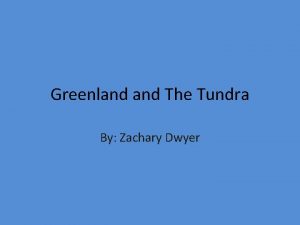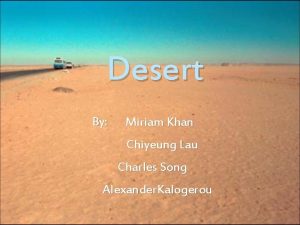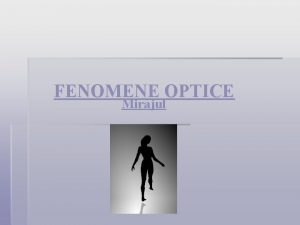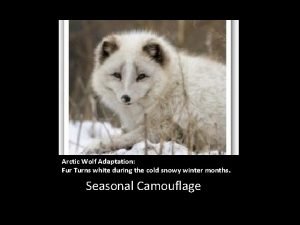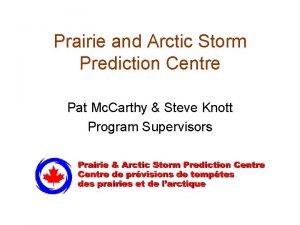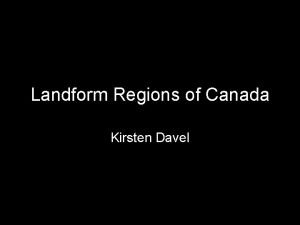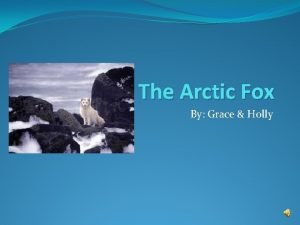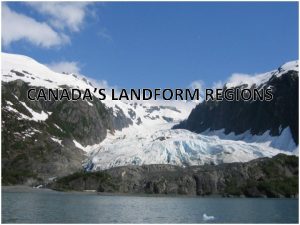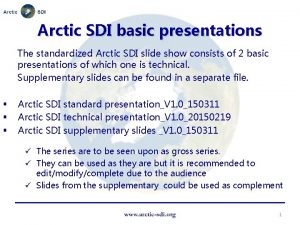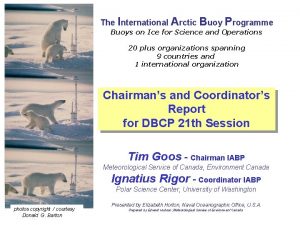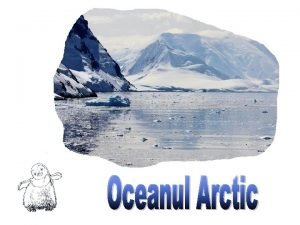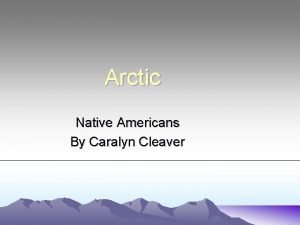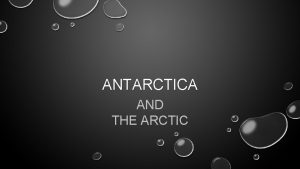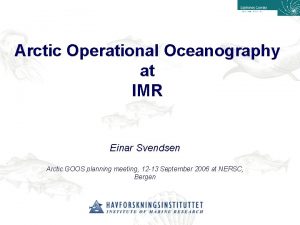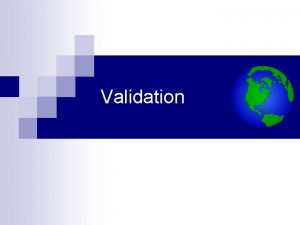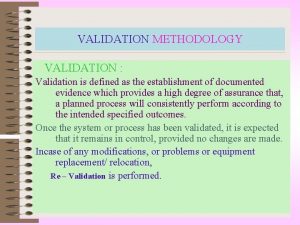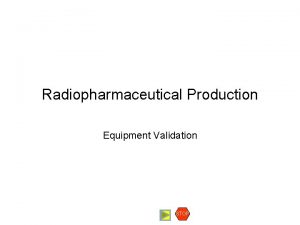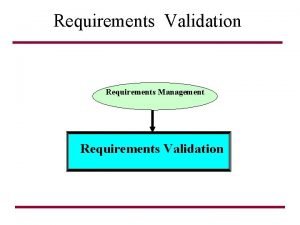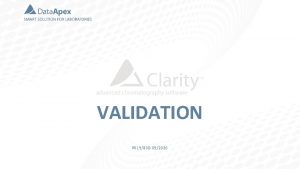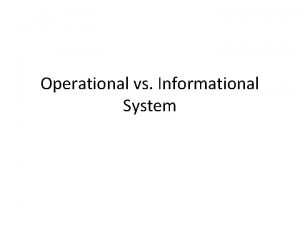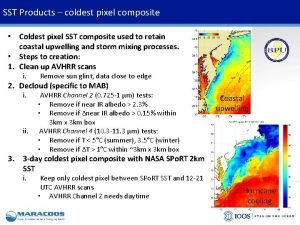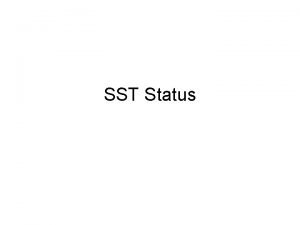Arctic SST Algorithms Validation of 6 operational SST

















- Slides: 17

Arctic SST Algorithms • Validation of 6 operational SST products in Arctic • High latitude algorithm developments (CCI round robin) • Validation of CCI products • Conclusions/Challenges • Future work

Arctic conditions Arctic Ocean is a challenging region for SST: • Persistent cloudiness • Sea Ice • Complex atmosphere • Few in situ data • Extended periods with twilight, day and night only -> These issues make SST retrievals challenging

Validation of operational products

In situ coverage • Majority of validation results from Nordic Seas and Barents sea • I. e. Validation results NOT representative of inner Arctic In situ coverage from Høyer et al, 2012

Validation results • 6 operational products • Solar elevation angles with AATSR, Metop-A and AMSR-E

High latitude algorithms within CCI

Regional vs global coefficients, Arctic Ocean • Daytime : NLSST • Nighttime: SST_3. 7 • Sensors: NOAA 17, 18, 19 and Metop-A (2006 -2010) • Results from independent test data set. • NOAA-19 has much fewer match-ups than others. • Largest improvements for daytime algorithms • Reduced regional bias in most cases compared to global algorithms

Atmospheric temperature effects Arctic Ocean • Much more temperature inversions in Arctic compared to Southern Ocean. • Tinv = (Tair_900 – Tair_surf) correlated with SST error Southern Ocean

Atmospheric profiles • High variability in Arctic associated with anomalous atmospheric profiles, not the case in the Southern Ocean • Both for negative and positive outliers Good (blue) : < -+0. 5*RMS Bad (red) : > -+2*RMS Tair_900 - Tair_surf

CCI product validation for high latitudes

High latitude validation results • L 2 and L 3 U products validated • Arctic > 60 deg N • Southern Ocean < 50 deg S • Limited data available for several sensors Number of Match-ups Spatial coverage, AVHRR-12 + 17

Overall results • • • Satellite – in situ Median and stddev Generally small biases Significant negative bias for AVHRR 18 Larger stddev in Arctic than Southern Ocean Timeline of match-ups

Solar zenith angle dependency • AATSR dependence upon water vapour and solar zenith angle • Cold summer bias for AVHRRs

TCWV dependency • AATSR dependence upon water vapour and solar zenith angle • Cold summer bias for AVHRRs

Summary/Challenges • SST products (AATSR, AVHRRs and AMSR-E) have in general larger errors in the Arctic, compared to Global and Southern Ocean performance • Biases generally depend upon Solar Zenith angle and TCWV • AVHRR biases found in operational products as well as ESA CCI products • Regional AVHRR coefficients can improve biases, largest improvements in daytime algorithms. • Limited in ”reference” situ observations in inner Arctic • Arctic NWP profiles with ”large SST errors” are more humid and warmer than profiles from ”low SST errors”

Future work • Continue the validation and error characterisation of Arctic SST products. • Write up the paper on CCI high latitude algorithms • Collect in situ data set for high Arctic validation • Look for alternative SST products: • Develop MW OE Sea Ice and SST processor for AMSR-E and AMSR 2 • Develop and validate Metop-A SST + IST product

High latitude DMI-ISAR deployments • • 7 week deployed at ODEN icebreaker Autonomous deployment July-November 2013 • • • Planned Activ circumpolar expedition (2014, 2015) RAL line, Denmark-Greenland
 Where is greenland located
Where is greenland located How does an oasis form
How does an oasis form Arctic studio
Arctic studio Miraje optice
Miraje optice Kwakiutl shelter
Kwakiutl shelter Flaps of featherless skin between their front and back legs
Flaps of featherless skin between their front and back legs Dot transfer papers
Dot transfer papers Tundra parasitism
Tundra parasitism Landform regions of canada map
Landform regions of canada map Classification of arctic fox
Classification of arctic fox What is the scientific name for a wolf
What is the scientific name for a wolf Adaptation is the process of
Adaptation is the process of Why was henry hudson exploring the arctic ocean?
Why was henry hudson exploring the arctic ocean? Where is the arctic lowlands located
Where is the arctic lowlands located Arctic sdi
Arctic sdi International arctic buoy program
International arctic buoy program Oceanul arctic animale
Oceanul arctic animale Arctic tribe names
Arctic tribe names
